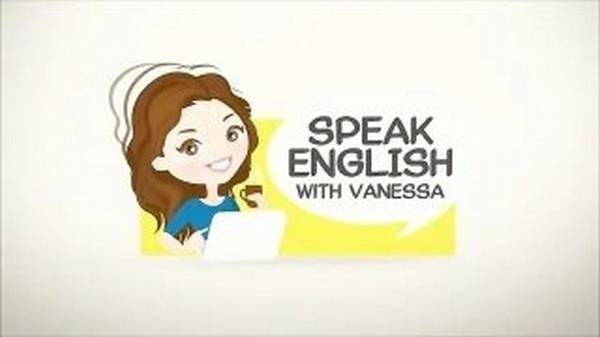- A+
我们都知道学习英语最重要的就是时态的语法学习。如果语法学得特别好,对英语写作非常有帮助,而且还可以考高分。现在,王老师给大家收集整理了一些英语语法,相信会对学生们起到帮助作用。
高一英语时态语法知识点:现在进行时
1.表示现在 (说话瞬间)正在进行或发生的动作。
[例句] He is reading a newspaper now.
2.表示当前一段时间内的活动或现阶段正在进行的动作 (说话时动作不一定正在进行)。
[例句] What are you doing these days?
3.表示说话人现在对主语的行为表示赞叹或厌恶等,常与always, constantly, continually等副词连用。
[例句] He is always thinking of others.
4.表示在最近按计划或安排要进行的动作。常限于go, come, leave, start, arrive等表“移动”、“方向”的词。
[例句] He is coming to see me next week.
高一英语时态语法知识点:过去进行时
1.表示过去某时正在进行的动作。
[例句] He was sleeping when Mary came to see him.
2.动词go, come, leave, arrive, start等的过去进行时常表过去将来时。
[例句] She said she was going to Beijing the day after tomorrow.
高一英语时态语法知识点:一般现在时
1.表示现在习惯或经常反复发生的动作或存在的状态,常与usually, always, sometimes, often, every day / week / month / year等时间状语连用。
[例句] 
He often does his homework in his study.
2.表示主语现在的特征、性格和状态。
[例句] The dictionary belongs to me.
3.表示客观规律或科学真理、格言,以及其他不受时间限制的客观存在。
[例句] The moon goes around the sun.
4.在有连词if, unless, before, as soon as, when, once, however等引导的时间、条件和让步状语从句中,用一般现在时表将来。
[例句] If you work hard, you won’t fail in the exam.
高一英语时态语法知识点:一般过去时
1.表示过去某一时间发生的动作或存在的状态。
[例句] She went to the zoo yesterday.
2.在时间、条件状语从句中代替过去将来时。
[例句] He said when she came he would tell her.
高一英语时态语法知识点:一般将来时
1.表示将来发生的动作或存在的状态,常与表示将来的时间状语连用。
[例句] I don’t know what will happen in the future.
2.常用来表示将来时的结构包括:
(1) shall / will +动词原形:(单纯)表将来,一般不用于条件句。
(2) be going to +动词原形:(计划)打算做……。
(3) be about to +动词原形:即将或正要去做某事,通常不与时间
状语连用,但可与when引导的从句连用。
(4) be to +动词原形:预定要做……。
(5) be doing表示按计划、安排即将发生的动作,常与go, start, set out, leave, reach, arrive, return, come, move等表位移的动词
连用。
高一英语时态语法知识点:现在完成时
1.表示过去发生或已经完成的某一动作对现在造成的影响或结果。
[例句] —Have you had your supper yet? —Yes, I have just had it.
2.常与介词for, during, in, within, over等引导的时间状语连用,表示过去的某一行为一直延续到现在。
[例句] I haven’t seen my English teacher for a long time.
3.表示反复或习惯性的动作,常与several times, once, twice, frequently等频度副词连用。
[例句] I have been to the USA several times.
4.表示从过去到现在没有发生过的动作。
[例句] I haven’t swept the floor for a week.
5.用在时间、条件状语从句中,表示从句动作先于主句动作完成。
[例句] I’ll tell him after you have left.
6.在“最高级+名词”或在“这是第几次…”之后跟定语从句,从句用现在完成时。
[例句] ①This is the third time I have been there.
②This is the best tea I have ever drunk.
高一英语时态语法知识点:过去完成时
1.表示在过去某一时刻以前已经开始并一直延续到这一时刻、或是在此刻前已经完成的动作。
[例句] By the end of 
last term, we had learned 1,000 English words.
2.有些动词 (如:hope, think, expect, mean, intend, suppose, want等)的过去完成时可表示过去未曾实现的希望、打算或意图。
[例句] I had hoped to see more of Beijing.
◆动词时态应注意的几点
1.瞬间性动词的一般现在时和现在进行时常用来表示将来的动作。例句:
①The film begins in a minute.
②My uncle is leaving tomorrow morning.
2.在时间、条件、让步状语从句中,常用一般现在时代替一般将来时。例句:
①Every time I listen to that song, I’ll think of my old friend.
②If you do that, I shall be very pleased.
③They’ll stand by you even if you don’t succeed.
3.一般过去时和现在完成时的区别:一般过去时和现在完成时都表示过去所发生的动作,但现在完成时强调这一动作与现在的关系,如对现在产生的影响、结果等,所以它不能和表示过去的时间状语连用;一般过去时只表示过去的事实,不表示和现在的关系,因而它可以和表示过去的时间状语连用。如:
—Have you finished your work?
—Yes, I have.
—When did you finish it?
—I finished it last summer.
◆直接引语与间接引语转换时应注意的几个问题:
1.人称的变化
2.时态的变化
3.时间状语的变化
4.地点状语的变化
例句:
①Xiao Yi said, “I want to go to the park this afternoon.”
→Xiao Yi said (that) he wanted to go to the park that afternoon.
②Bob said, “We’ll have a meeting here tomorrow morning.”
→Bob said (that) they would have a meeting there the next morning.




